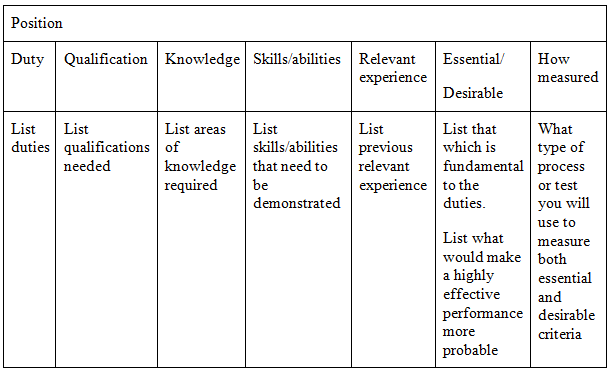Criteria
Usually the requirements are broken down into essential criteria and desirable criteria. They may also be listed under headings such as:
- experience
- skills
- qualifications (or education)
- competencies or behaviours.
These may even be broken down further into areas relevant to the particular job. Below is an example.
Position: Learning and development manager
Requirements:
- training experience
- management experience
- human resources experience
- qualifications
- subject area experience
- competencies or behaviours.
In general, this level of breakdown is not necessary. However, many larger job advertisements list the essential and desirable criteria. You will find examples in the newspaper.
In this document you must be careful that everything you list is a genuine requirement for doing the job. Perhaps in the past the job-holder had a university degree, but is that really necessary? Are there any references to gender, or requirements that would rule out one gender unnecessarily (eg, lifting very heavy objects)?
Of course, you need to be careful when determining just what kind of a person the organisation needs in the position. As you know, there are many legal issues to take into consideration.
Discrimination may be either direct or indirect (hidden). An example of direct discrimination would be if you specified a man for a position of forklift driver.
Indirect discrimination, though, may be when your requirements unnecessarily rule out a group of people from applying. An example of indirect discrimination would be if you specified a height requirement (eg, six feet tall) when there is no need for that. This is indirect discrimination because it would rule out shorter people (generally women as well as shorter men of some nationalities).
You might like to create a form to assist you identify the selection criteria for our position.


